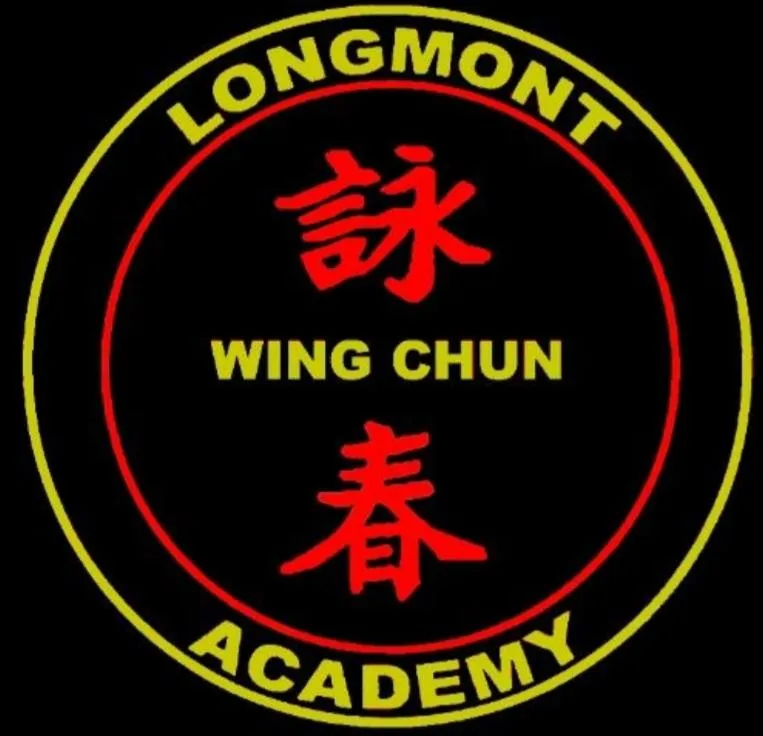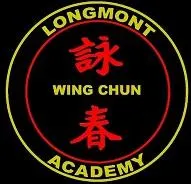

The History of Wing Chun: From Ancient Legends to Longmont
Wing Chun is more than just a martial art; it’s a living heritage passed down through centuries. At Longmont Wing Chun, we’re proud to carry on the tradition of this effective self-defense system in our local community. If you’ve been searching for “Longmont Kung Fu,” “Longmont martial arts,” or “kung fu near me,” our school stands ready to connect you to a lineage that traces back to the founders of Wing Chun.
Legendary Beginnings: Ng Mui & Yim Wing Chun
The origins of Wing Chun are often attributed to Ng Mui, a Shaolin nun renowned for her unparalleled martial arts skill. Legend says she developed the system after witnessing a crane and a snake engaged in combat, blending their movements into a swift and efficient fighting style. She passed her knowledge on to Yim Wing Chun, a young woman who used the art to defend herself against unwanted advances.
From these humble beginnings, Wing Chun grew into a comprehensive system based on simplicity, directness, and economy of motion. Despite its streamlined appearance, it integrates complex concepts of energy flow, structure, and timing—an ideal choice for those seeking “martial arts near me” that emphasize practical self-defense.
The Yip Man Legacy
Among modern Wing Chun practitioners, few names are as influential as Grandmaster Yip Man. Born in Foshan, China, Yip Man revolutionized Wing Chun teaching methods and introduced the art to a global audience. His students—most famously Bruce Lee—helped spread Wing Chun’s reputation across the world, proving that its principles remain just as effective in contemporary settings as they were centuries ago.
Grandmaster William Cheung
& Our Lineage
Grandmaster William Cheung, a direct disciple of Yip Man, became a pivotal figure in preserving and further refining the Wing Chun system. Known for his “Traditional Wing Chun” approach, Grandmaster Cheung has emphasized a holistic training method that incorporates scientific principles of body mechanics and energy flow.
Our Longmont Wing Chun school proudly follows this lineage, ensuring every technique is rooted in authenticity. When you step into our training hall, you’re not just learning “another martial art”—you’re immersing yourself in a centuries-old tradition meticulously passed down through generations.
Wing Chun’s Journey to Longmont
So how did this iconic Southern Chinese martial art find its way to Longmont? Over time, dedicated practitioners brought their knowledge to the United States, establishing schools and sharing the art’s rich heritage. With growing interest in “Longmont martial arts,” Wing Chun has become more accessible than ever, offering local residents the chance to study a highly effective self-defense system without leaving their hometown.
Our mission in Longmont is to preserve the core principles of Wing Chun—efficiency, directness, and adaptability—while offering modern training methods. This approach ensures that students of all ages and backgrounds can quickly grasp the fundamentals, develop confidence, and enjoy the countless benefits of consistent martial arts practice.
Key Historical Milestones
Ng Mui & Yim Wing Chun
- The legendary creation of a new fighting style inspired by the natural world.
Emergence in Southern China
- Wing Chun’s growth within local communities, honed through real-world experiences.
Grandmaster Yip Man’s Influence
- Formalized teaching methods that propelled Wing Chun onto the global stage.
Grandmaster William Cheung’s Innovations
- Development of Traditional Wing Chun, blending classic concepts with modern insights.
Arrival in Longmont
- Dedicated practitioners founded local schools to bring authentic Wing Chun to Colorado.
Connecting History to Your Training
While the story of Wing Chun spans centuries, its essence remains as relevant as ever. By studying Wing Chun in Longmont, you tap into a living lineage that teaches practical self-defense skills, sharpens mental focus, and fosters personal growth. Whether your goal is fitness, self-improvement, or learning a new skill, Wing Chun provides a transformative path.
Ready to experience Wing Chun for yourself? Check out our Class Schedule to find a session that fits your needs. Our beginner-friendly environment makes it easy to get started, and experienced students will discover advanced techniques that further deepen their expertise..
Why Wing Chun Is Perfect for
“Martial Arts Near Me”
1. Practicality: Wing Chun’s direct techniques are designed for real-world scenarios.
2. Efficiency: Minimal wasted motion allows practitioners of all sizes to perform effectively.
3. Adaptability: Techniques can be modified for different body types, fitness levels, and self-defense situations.
4. Community-Oriented: Training with us in Longmont means joining a supportive group focused on mutual growth.
Continuing the Legacy in Longmont
Today, Wing Chun remains a vital martial art thanks to the passion and dedication of teachers and students around the world. At Longmont Wing Chun, our goal is to honor this legacy by offering high-quality instruction that respects tradition while embracing the needs of modern learners. If you’ve been looking for “kung fu near me” or “Longmont martial arts,” there’s no better way to immerse yourself in both history and hands-on training than by becoming part of our Wing Chun family.
Join us, and help carry on a lineage that has stood the test of time—right here in the heart of Longmont.
Principals at the Longmont
Wing Chun Academy
The Traditional Wing Chun system can be used in close quarter or distant fighting, and utilizes the following principles:
Guard the Center:
Guarding the center forces your opponent to take a longer route in order to attack. Your opponent must strike in an arc, giving you extra time and the advantage of opening the opponent's center.
Face the Point of Contact:
There is an imaginary line drawn down the center of the body. This is called the centerline. This line should face the point of the attacking limb, placing your body behind the defending arm. If you block a forceful circular punch with only the arm, it can collapse.
Economize Movement:
Try to defend and attack with minimum movement. In Wing Chun a defense is turned into an attack immediately, sometimes simultaneously.
Touch Reflexes:
Chi Sao (sticking hands) exercises teach sensitivity and contact reflexes. These exercises teach how to react when contact is made with the arms. You will also learn how to interrupt your movements enabling you to change direction instantly.
Watch the Leading Elbow:
Watching the opponents leading elbow will enable you to interpret the angle of attack. The elbow travels at least four times slower than the fist in a circular attack, and at least two times slower that the fist in a linear attack. The elbow is also far enough away to give you time to react. No matter what movement your opponent makes his/her elbow will move.
Use Linear Striking Action:
Striking along the centerline forces your opponent to take the longer outside route to strike, giving you the advantage of making first contact.
Avoid Fighting Force Against Force:
Never fight or resist a strong oncoming force, rather redirect it in a harmless direction. The result will be an advantageous position for a counterattack.
Train to Use Two Arms at the Same Time:
You will learn how to use both sides of your brain. The right side of your brain controls the left side of your body and vice versa. Once you learn how to use both arms independently you will be able to defend and counter attack almost simultaneously.
Testimonials

Ryan Harper
Absolutely love this place. The Sifu is a amazing teacher and the senior students are very patient and helpful. If you want to learn a traditional kung fu style like Wing Chun this is the place!
Been going for just over a year. And plan to for many years to come. This is a great place for adults and families to learn together.


Elizabeth Sutton
Sifu Dan & Norma are great!! My kids have really enjoyed their classes and my oldest still talks about being able to break the boards 🙂. Thank you for all you guys do.


Gail
I've been a student here and working with Sifu Dan and Sifu Norma for over 2 years. They are amazing teachers and adapt the lessons to each person's needs. They consistently help students achieve more than they thought possible while still managing to have fun while doing it. Not only have classes improved my coordination and reflexes, learning Traditional Wing Chun under them has also helped me with problem solving and strategic thinking. Sifus' Dan and Norma are both very intuitive as well as knowledgeable and can see how to help you correct your technique with class structure and exercises so you consistantly get better and better without realizing it's happening until in fact it has. I would highly recommend Longmont Wing Chun for people of all skill levels and abilities.

Classes & Curriculum
Kung Fu & Chi (Qi) Classes
Adult Wing Chun Kung Fu
Adult Advanced & Applied Wing Chun Kung FU
Youth / Family Kung Fu
Basic Self Defense with Kung FU
Isometric Chi Kung - Qi Gong & Tai Chi Alternative
Meridian Stretching
... save money with monthly discounts ......
FREE introductory lesson available ...
Wing Chun Kung Fu Curriculum
Traditional Wing Chun teaches three empty handed forms, wooden dummy, sticking hands and two weapons forms.
Siu Lim Tau (Little Epiphanies In The Mind)
Chum Kil (Seeking The Bridge)
Bil Jee (Thrusting Fingers)
Muk Yan Jong (Wooden Dummy)
Chi Sao (Sticking Hands)
Baat Jaam Do (Butterfly Swords)
Luk Dim Boon Kwan(Dragon Pole)
Effective, easy to learn, fighting techniques derived from their practice.
Isometric Chi Kung A Qi Gong
& Tai Chi Alternative
Searching for Qi Gong or Tai Chi near you? Experience Isometric Chi Kung in Longmont—an isometric method by Grandmaster William Cheung to boost energy, balance, and wellness.
How Longmont Got
Wing Chun Kung Fu
Wing Chun is more than just a martial art; it’s a living heritage passed down through centuries. At Longmont Wing Chun, we’re proud to carry on the tradition of this effective self-defense system in our local community. If you’ve been searching for “Longmont Kung Fu,” “Longmont martial arts,” or “kung fu near me,” our school stands ready to connect you to a lineage that traces back to the founders of Wing Chun.
Kwoon Location: 1150 Francis St, Longmont, CO 80501
Call (720) 378-1865
Contact Us: https://longmontwingchun.com/contact-us-page

Facebook
Youtube